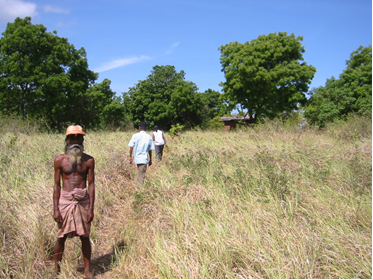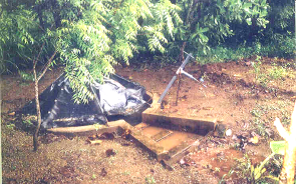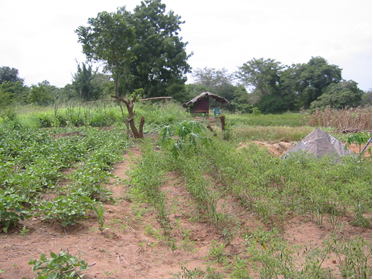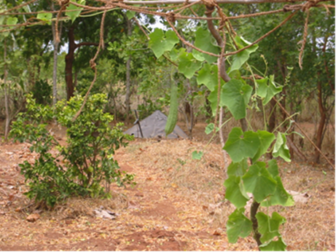Rainwater harvesting for Small Holder Crop Production
| Project Area | Kurundamkulama, Mihintale in Anuradhapura District |
|---|---|
| Duration | April 2003 to July 2004 |
| Funded by | Centre for Poverty Elevation (CEPA) |
| Objectives | To examine the effectiveness of rain water harvesting methods and conservation in crop production |
Background of the Project
Nearly 80% of the households in the Dry Zone derive their incomes mainly from agriculture. Poverty is widespread mainly in the Dry Zone of Sri Lanka. For example in Anuradhpura district, around 50% of the households are below poverty level ie. below a monthly income of Rs.1500/-.
Crop production is the main source of income of nearly 80% of the people living in these areas. Hence successful crop production determines to a great extent their poverty level and depends on the efficient use of available water and some other factors. Mainly during Yala season the rainfall is less and available water for cultivation of crops during this period is inadequate.
From the total rainfall around 25% of rain water is lost in the form of surface run-off and conserving this water will not only promote crop growth in areas where water is limiting, but will also reduce soil erosion.
Among various methods of storing of water harvesting and conservation, the most common and economical method is storing of water in surface tanks. Therefore, it is vital to conduct a study on how harvested rainwater in low cost surface runoff tanks will be used to improve the income level of households living in the dry zone area of Sri Lanka.
Project findings and Outcome
In the dry zone during the months of February, March, July and August farmers are unable to cultivate crops due to lack of rain.
However during the rainy period ( Maha) these areas receive approximately 710mm of rain fall. More than 40% of this rain fall is lost as run off, which amounts to 1150 m3 from an acre of land. If a proportion of this water can be collected and retained in the home gardens it can be used to irrigate crop during the dry season.
5 m3 rain water run off tank constructed at the bottom of the garden at Kurundamkulama, Mihintale collected an average volume of 5426 litres from Maha season rain fall of 537 mm. Farmers were able to cultivate crops such as Chilies , Brinjal, Maize, Cowpea, Capsicum and thereby increase their income by 200% from last years Maha season.
Rain fall of 460 mm in the Yala season collected on an average 5055 litres of water in the tanks and the farmers were able to cultivate gourds, “ Thibbatu”, Papaya as well as keep the annual plants from drying up.
Photo Gallery
 Land before Intervention |  Run off Rain water tank |
 Maha 2003 Cultivated land |  Yala 2004 Cultivation |
